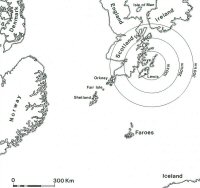

Figure 1: Map of Europe with the Western Isles highlighted
Figure 2: Map of the Outer Hebrides, Skye and the west coast of mainland Scotland showing principal islands mentioned in the text
1 Environmental and Research Background | 2 Post-medieval Buildings | 3 Earlier Vernacular Buildings | 4 Conclusions and Discussion
The Scottish Islands! A somewhat obscure topographical notion to most non-Britons – a few green rocky islands out in the wild ocean, the cold and the rain. (Roussell 1934, 5)
As Aage Roussell suggests, the Western Isles or Outer Hebrides island chain are one of the most remote parts of modern Britain (Figs 1 and 2). In an age where transport is dominated by the car and settlement is defined by parameters such as industrialisation, Lewis, Harris, the Uists, Barra and the smaller isles have, to some extent, been by-passed by mainstream development. However, this has not always been so; recent work has shown that the so-called 'Atlantic periphery' of Europe may actually have been a highway for cultural exchange and diversity, and that the coastal fringe of Europe, from Spain to Norway, may have been the centre of a separate maritime heritage (Cunliffe 2001) (Fig. 3). Further, Robert Dodghson (1998, 12) has questioned the utility of adjectives such as remote when 'the pressures of modernity forced them [the islands] into a national economic system' very recently.


Figure 1: Map of Europe with the Western Isles highlighted
Figure 2: Map of the Outer Hebrides, Skye and the west coast of
mainland Scotland showing principal islands mentioned in the text

Figure 3: An island-centred geography (Armit 1996, 7)
Within this framework, where Hebridean culture is seen as independent and not derivative of mainland and European, this article utilises the analogy with post-medieval Outer Hebridean vernacular buildings to explore aspects of the design, construction and use of prehistoric Hebridean buildings from approximately 300 BC down to the late medieval period.
© Internet Archaeology/Author(s)
University of York legal statements | Terms and Conditions
| File last updated: Tues Feb 28 2006